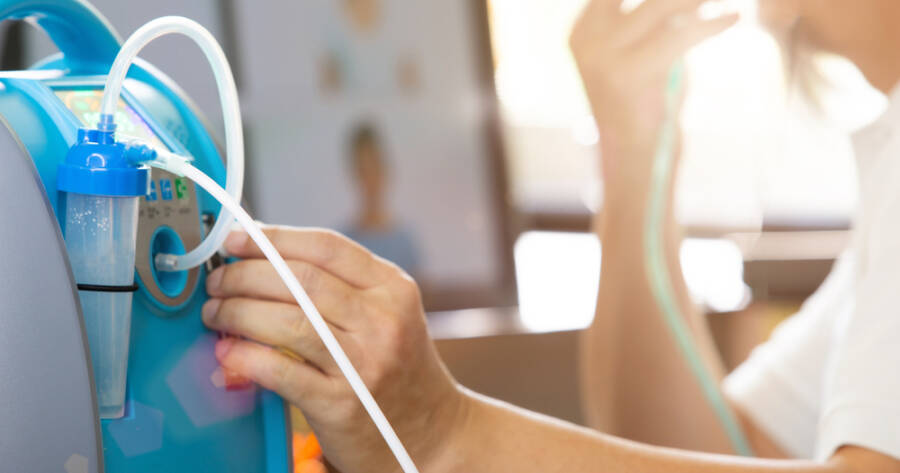In 2025, several oxygen concentrator models stand out for their performance and innovation. The Drive DeVilbiss 5 Liter Home Oxygen Concentrator is praised for its reliability and efficiency, making it a top choice for many users. For those prioritizing energy efficiency, the Inogen At Home 5L Concentrator offers excellent performance with lower power consumption. Additionally, the CAIRE Companion 5 Home Concentrator provides great value without compromising on quality. When choosing an oxygen concentrator, consider factors such as oxygen concentration rate, flow rate, portability, noise level, and power supply to ensure it meets your specific needs.
Understanding Oxygen Flow Rates
One of the most important factors when choosing an oxygen concentrator is the flow rate. Oxygen concentrators provide oxygen in either continuous flow or pulse dose settings. A continuous flow concentrator delivers oxygen steadily, which is ideal for people who need a constant oxygen supply. On the other hand, a pulse dose concentrator releases oxygen only when the user inhales.
Most home concentrators, like the Drive DeVilbiss 5 Liter, offer continuous flow, while portable options, such as the Inogen One G5, provide pulse dose delivery. Doctors usually prescribe a specific liters per minute (LPM) requirement, so always check if the concentrator can meet your prescribed level. Home models typically offer 1-5 LPM, while some high-flow models provide up to 10 LPM.
Choosing Between Home and Portable Models
Oxygen concentrators come in two main types: home and portable. Home oxygen concentrators are larger, designed for continuous use, and run on electricity. These are ideal for individuals who spend most of their time indoors. The CAIRE Companion 5 and Inogen At Home 5L are great choices in this category.
Portable oxygen concentrators (POCs) are smaller, lightweight, and battery-operated, allowing users to move around easily. Models like the Inogen One G5 and Philips Respironics SimplyGo provide flexibility for those who need oxygen therapy while traveling. However, portable models usually offer lower oxygen output than home units.
If you need oxygen mainly at home, a stationary model is more affordable and reliable. But if you travel frequently, a FAA-approved portable concentrator may be essential.
Noise Level and Power Consumption
Noise level is another factor to consider, especially if you plan to use your concentrator while sleeping. Some models, like the Inogen At Home 5L, are designed to be quiet, producing around 40 decibels of sound—similar to a refrigerator hum. In contrast, higher-flow concentrators can be noisier, reaching 50-60 decibels. If you are sensitive to noise, check the manufacturer’s specifications before purchasing.
Power consumption is important as well, especially for those who want to reduce energy costs. The Inogen At Home 5L is one of the most energy-efficient home concentrators, using about 100 watts, while other models may use 300-500 watts. If you live in an area with frequent power outages, consider a unit with a battery backup or an external power supply option.
Additional Features and Maintenance
Some oxygen concentrators come with extra features that can improve convenience and ease of use. For example, models with built-in oxygen sensors ensure consistent oxygen purity. Others offer remote controls, mobile app integration, or low oxygen alerts for added safety.
Maintenance is another important consideration. Most home oxygen concentrators require filter cleaning or replacement every few months to maintain efficiency. Some models have washable filters, while others need disposable ones. Checking the maintenance requirements beforehand can help you choose a unit that fits your lifestyle.
Making the Right Choice for Your Needs
Choosing the right oxygen concentrator depends on your prescribed oxygen needs, lifestyle, and budget. If you require a high, continuous flow, a home concentrator like the Drive DeVilbiss 5 Liter is a solid option. If energy efficiency and quiet operation are priorities, the Inogen At Home 5L may be the best fit. Meanwhile, the CAIRE Companion 5 offers a balance of performance and affordability.
For those who need a portable option, models like the Inogen One G5 or Philips Respironics SimplyGo provide the flexibility to stay active. Always check with your doctor to ensure the concentrator meets your oxygen therapy requirements. By considering factors like flow rate, portability, noise level, and power usage, you can find a concentrator that suits your specific needs and improves your quality of life.





